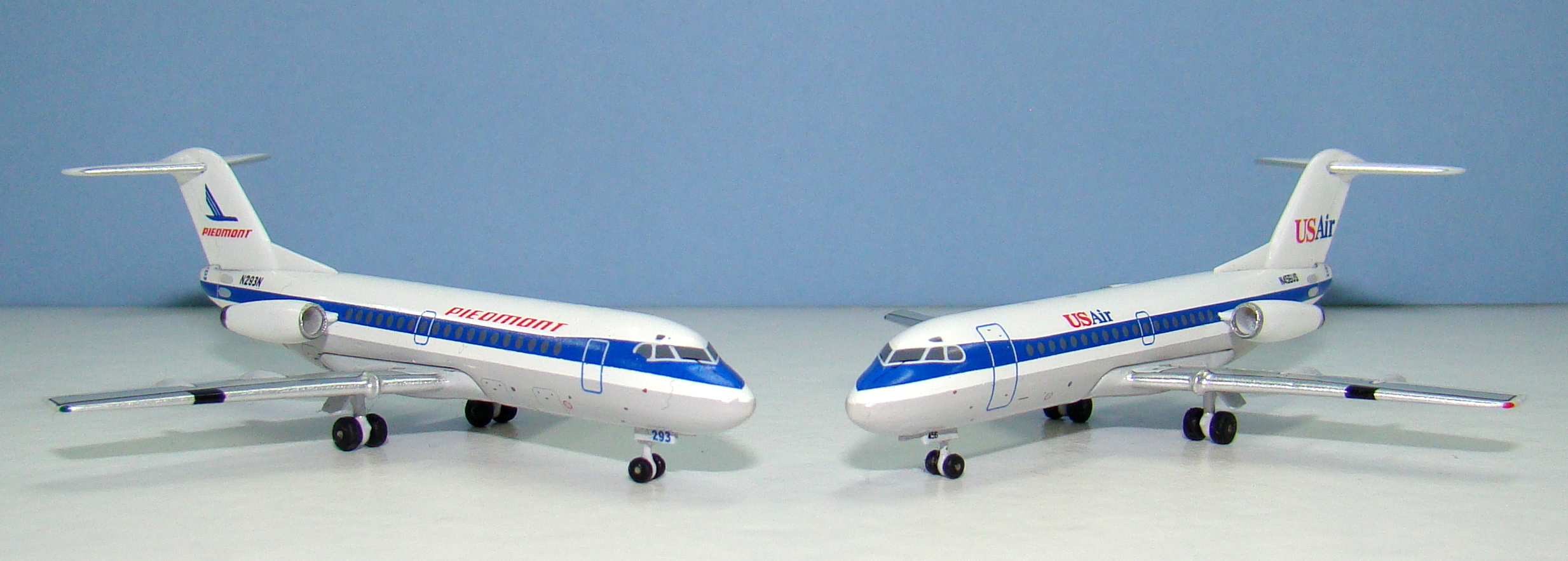
The Fokker F28 Fellowship was one of the first multi-national aerospace programmes and a good little earner for Fokker. In total 241 were built and the type saw good service around the world. In 1/400 scale, as you’d expect for a smaller classic, it hasn’t been well represented but Aeroclassics are doing their part to remedy that and the production of a pair of US F28s in March has produced two long awaited renditions of the F28. In this review I’ll look at both of the releases.
THE REAL THING
Piedmont was one of the original 13 local service carriers of the regulated era in the United States. They avoided the gradual consolidation of the local service airlines as they became larger regional airlines in the 1970s and after initially being against deregulation eventually grasped the opportunities it gave with both hands. The growth in passenger numbers, fleet size and profits was impressive. Piedmont received large numbers (over 100) of new 737-200s and 300s and was the launch customer for the larger series 400. It also received 42 secondhand 727-100/200s and six new 767-201ERs to inaugurate international services from its Charlotte hub. On the smaller side of things Piedmont retired their YS-11 turboprops by 1982, but acquired a substantial fleet of Fokker F28s, including 20 of the shorter 1000 series.
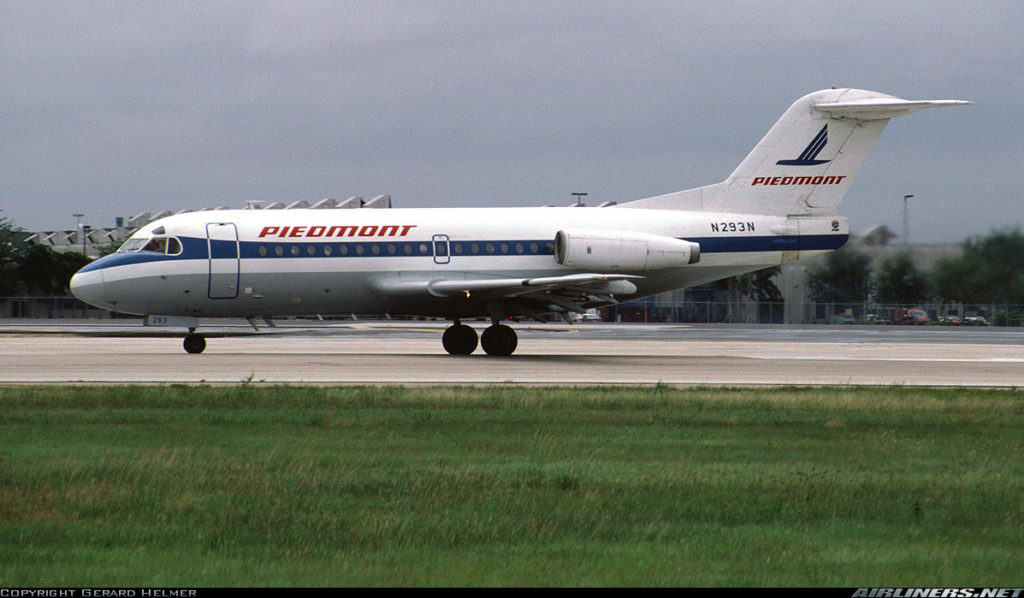
Further F28s arrived when Empire Airlines was acquired in 1985 and Piedmont opened up new hubs at Baltimore, Dayton and Syracuse. Piedmont should be seen as one of the few success stories of the initial deregulation period, but even they could not ultimately avoid the merger mania of the mid-1980s. On March 9, 1987 Piedmont was purchased by the USAir Group for $1.59 billion although the airline survived with its own identity until August 1989. From then onwards the Piedmont fleet began appearing with temporary USAir titles on the fuselage and tail. Many of the newer members of the Piedmont fleet had been delivered in bare metal versions of the Pacemaker scheme to enable easier repainting into the USAir livery.
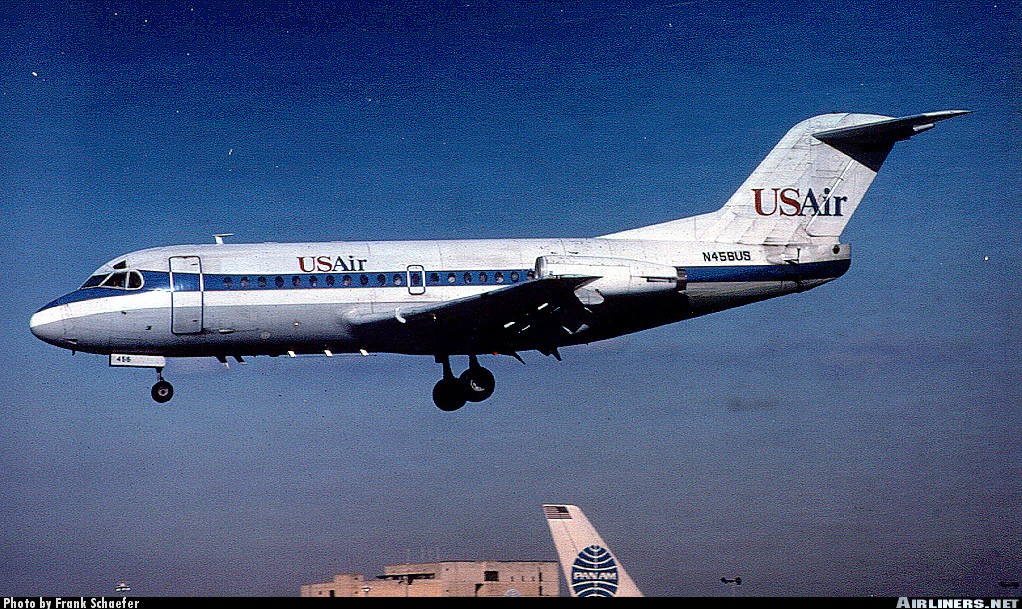
The temporary liveries could still be seen into the 1990s and indeed I flew an ex-Piedmont F28, between MCO and FLL, and an ex-Piedmont 727-200, between MCO and BWI, in 1991. Both still wore the hybrid scheme. The F28-1000s would serve USAir into the mid-90s. Most would be sold on in the period from 1994-1996 and all would eventually end up with Time Air or Canadian Regional Airlines.
N293N had originally been PK-GJR with Garuda Indonesia, became N458US with USAir and joined Canadian Regional in May 1995 as C-FCRP. N456US was PK-GJZ with Garuda and then N283N with Piedmont. She joined Canadian Regional as C-FCRM in November 1994 and continued to fly with Air Canada Regional after the merger until at least 2005.
THE MODEL
The format for my reviews is to split them into three key areas:
- The mould of the aircraft
- The paint and livery
- Printing and quality control
Each can get a maximum score of 10 for a section giving a total combined score of 30.
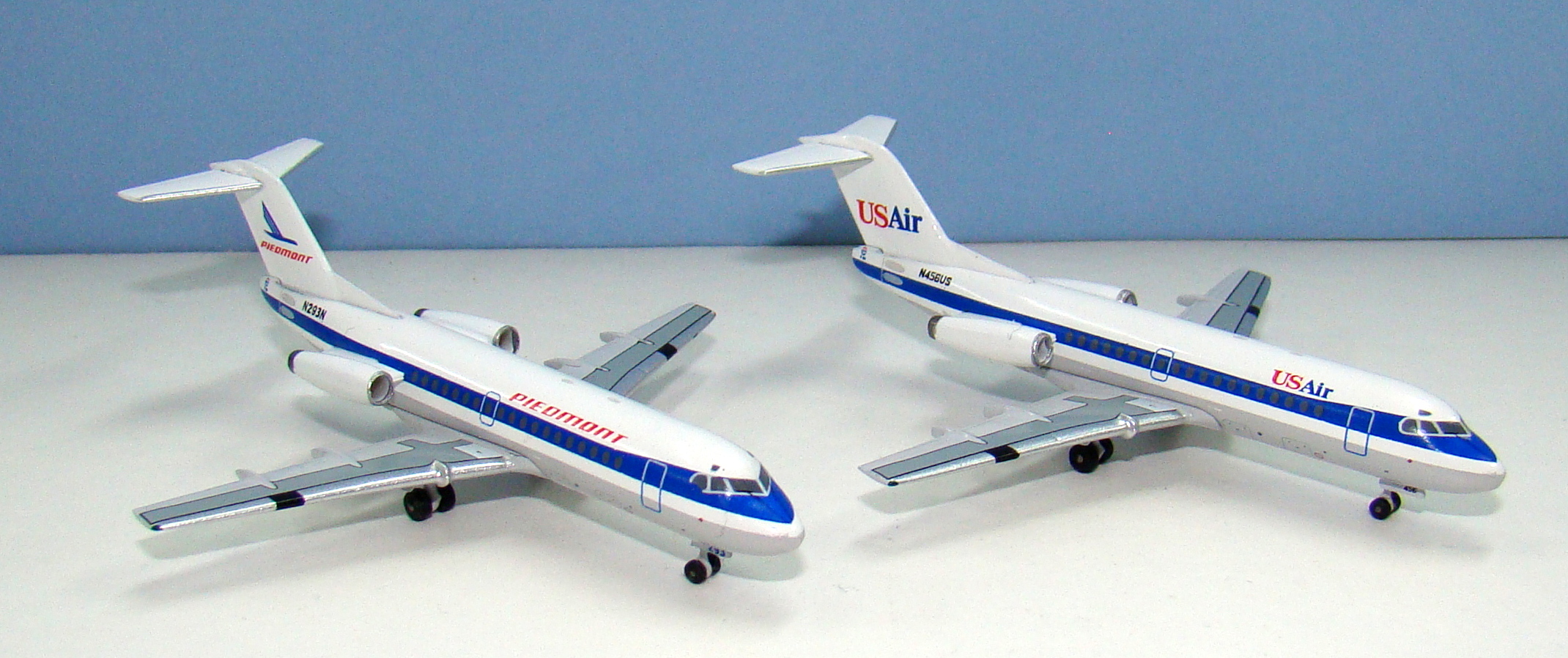
THE MOULD
The Aeroclassics Fokker F28 mould is the only one for this aircraft type in 1/400 scale, although Gemini have a Fokker F70 mould. It dates from as far back as 2007 when Aeroclassics released a small and obscure batch of Indonesian and South American F28s and then vanished until 2014. Since there have been a lot of Australian and Canadian F28s but until March 2017 there were no American F28s at all, which is very strange. This pair of Piedmont and USAir F28s represents the only examples for a US airline.
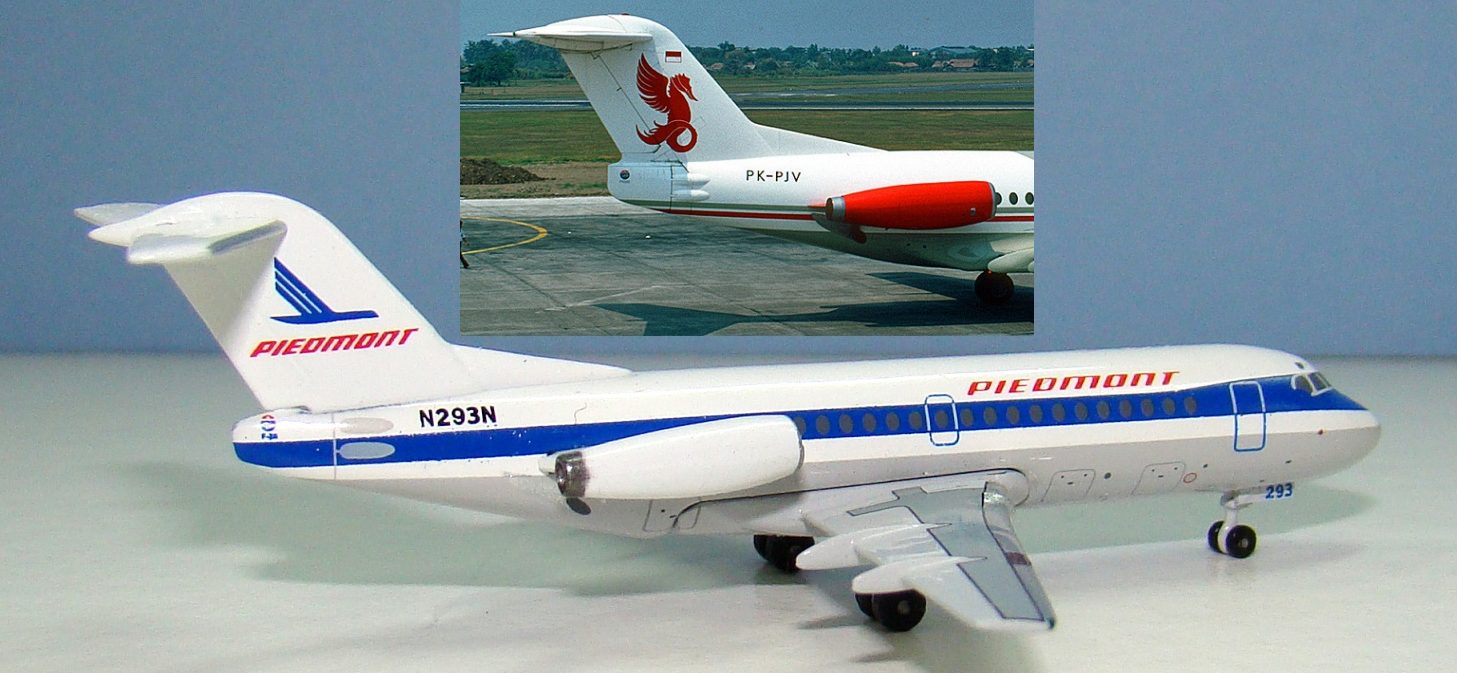
Looking at the mould itself, which is the same for both models, it is a nice little Fokker. Starting at the rear both the vertical stabiliser and engines look correctly sized and shaped. The diagnostic split tail-cone airbrake has an incorrect rounded top line when it ought to be completely horizontal. This isn’t major I guess but it is so much part of the type’s look that it is a shame. The mould is a cradle fit one but the seam line is very unobstrusive so I have no issue with that.
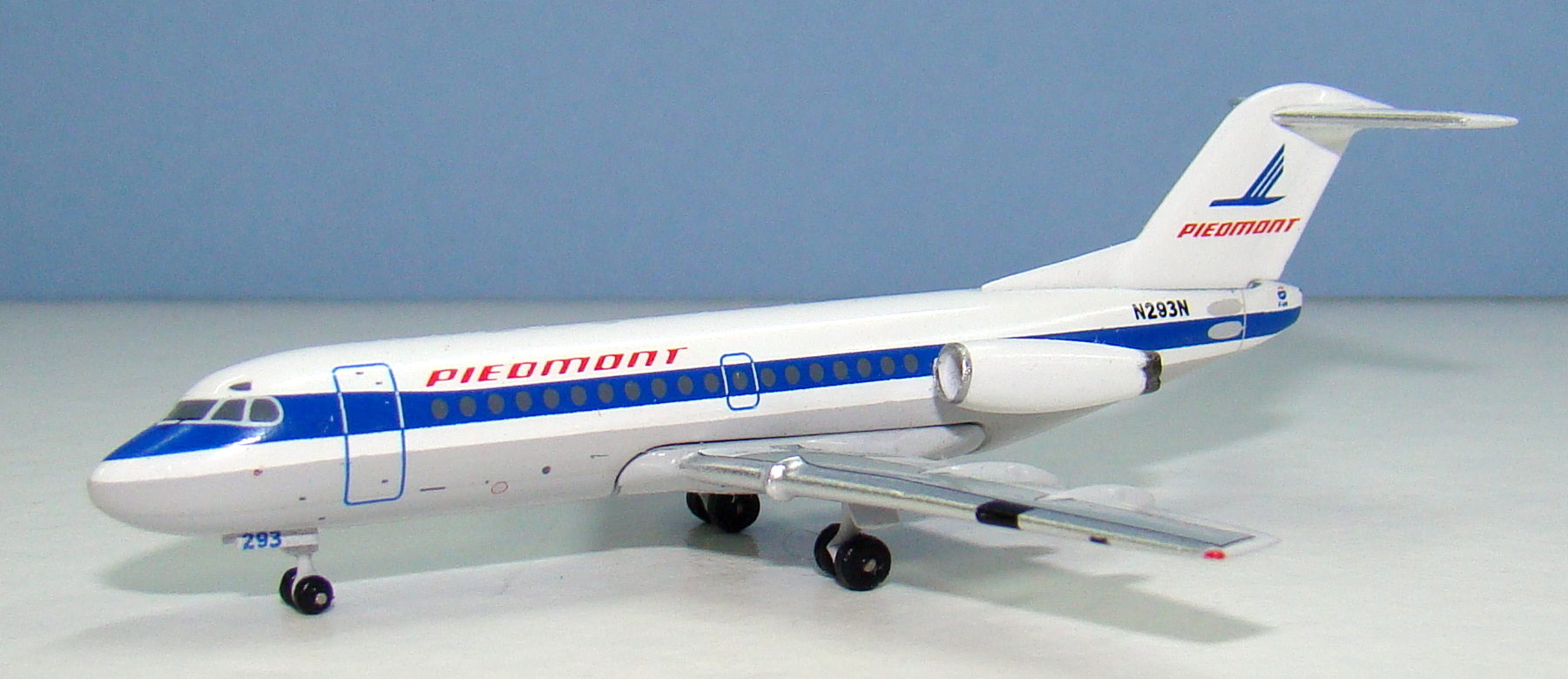
Moving forward and the nose is a little asymmetric. The lower curve is stronger than the upper one and the cockpit curve is not deep enough. This does make placement of the cockpit windows a little difficult but overall the nose still looks like an F28. The last point of criticism is the undercarriage. The gear legs are a little too long and look more like the aircraft when it’s coming in to land, with everything hanging, rather than when it is at rest on the ground.
Despite a few inaccuracies this is still a pretty good mould and looks the part of the little Dutch jet.
SCORE – 7
PAINT & LIVERY
Piedmont had a well known, simple but rather lovely livery built around the speedwing pacemaker bird log on the tail, a blue cheatline, grey belly and red titles. When USAir finally tookover they simply replaced the Piedmont titles and entire tail with USAir titles until a full repaint could be undertaken. Aeroclassics has got the simple shade of blue and red correct, although I think the grey used on the belly is too light.
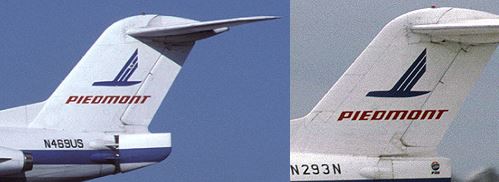
N293N
Looking at the livery details and the Piedmont logo and titles on the tail look ok at distance. Initially I thought Aeroclassics had mucked up and they have, just not as badly as I thought. The image I have of this aircraft shows the wings of the bird logo further forward than on the model but looking at other PI F28s there seems to be some variance. Were there two different bird logos or is this simply a paint shop variation? Anyway Aeroclassics have given the model the longer necked bird and even then the bottom line of it should be straight and the head shorter. Some F28s wore that version but not N293N. The main fuselage titles are a little thin, but otherwise until you get ahead of the main entry door everything is good. Unfortunately then we have another case of the designer not paying attention to the photos he’s been working from. It would be easier to get the model correct! Instead the cheatline curve up to the cockpit arcs the wrong way. It should be an under-arc but instead is an over-arc. Worse is to come at the nose where on the real thing the cheatline curves downwards (as does the grey belly line). On the model the cheatline and belly line just go straight. It’s rather a large blunder.

N456US
The only real difference between this model and the full Piedmont should be the titles and tail. Unsurprisingly seeing as this is no doubt just a printing tweak of the full scheme this model repeats the failings of N293N in regards to the nose area. The fuselage titles are however correct although the US is a bit too thick. Sadly on the tail a lack of care has rather damaged the model. Technically this is probably a printing issue but seeing as it impacts one of the major livery components I’ll discuss it here. Are the US and Air printed separately? It looks like they are because they are not level. The US and Air should be printed along the same lower line but on the model the Air is clearly higher on both sides. That’s rubbish.

One last point I should make is that inside the engines on both the fanblades are white. I can understand why this would be hard to change given the model’s small size but nonetheless I’m sure they weren’t white on the real thing.
N293N N456US
SCORE – 7 SCORE – 6
PRINTING & QUALITY CONTROL
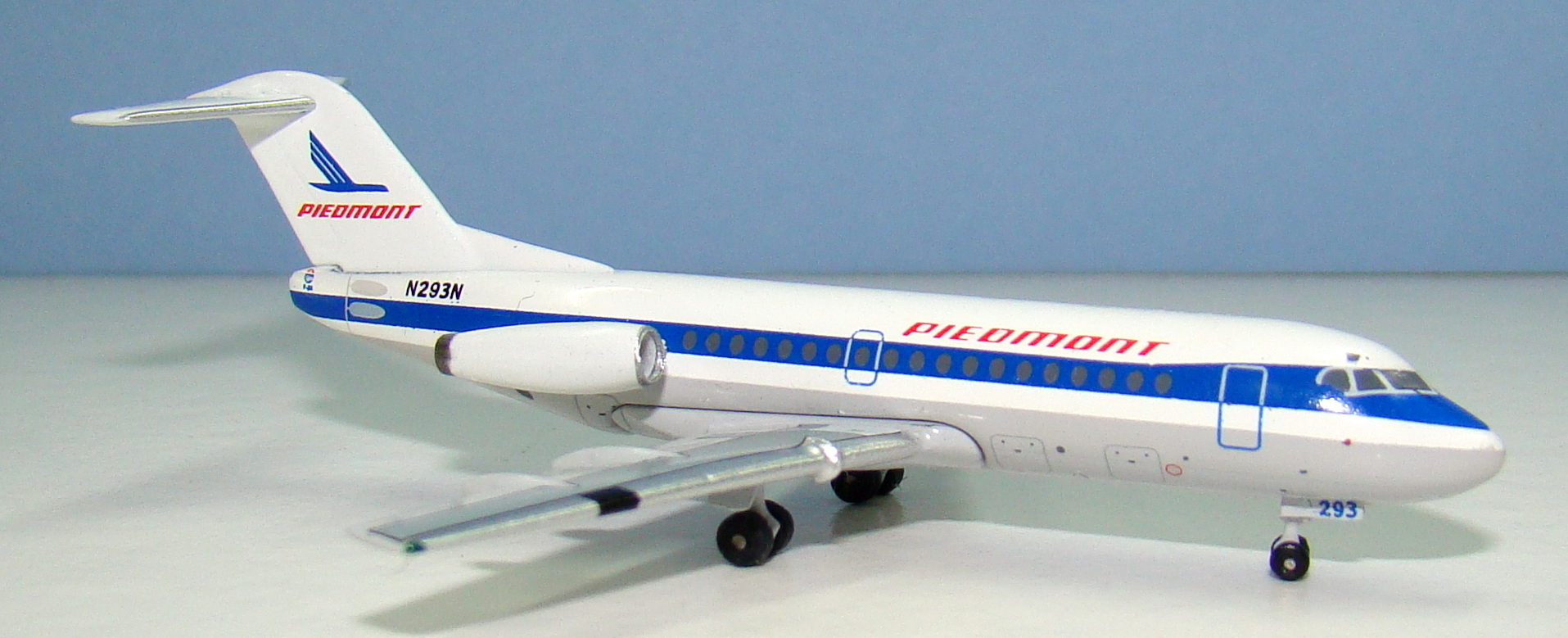
As I have come to expect from Aeroclassics there are no major printing defects and indeed the printing on the wings is very good, including the black rectangle on the wing leading edge. On both the shape of the eyebrow windows on the cockpit is not good and they lack the Rolls-Royce logo on the engines. A really nice bit of printing is the weird outlet thing on the starboard side under the engine. I don’t know what it is on the real thing (is it the APU outlet?) but Aeroclassics have done it well (check the Piedmont picture in the mould section to see it). The Piedmont example does exhibit a printing issue on the starboard side. The blue of the cheatline has leeched across and covered the window rim at the lower corner of the cockpit.
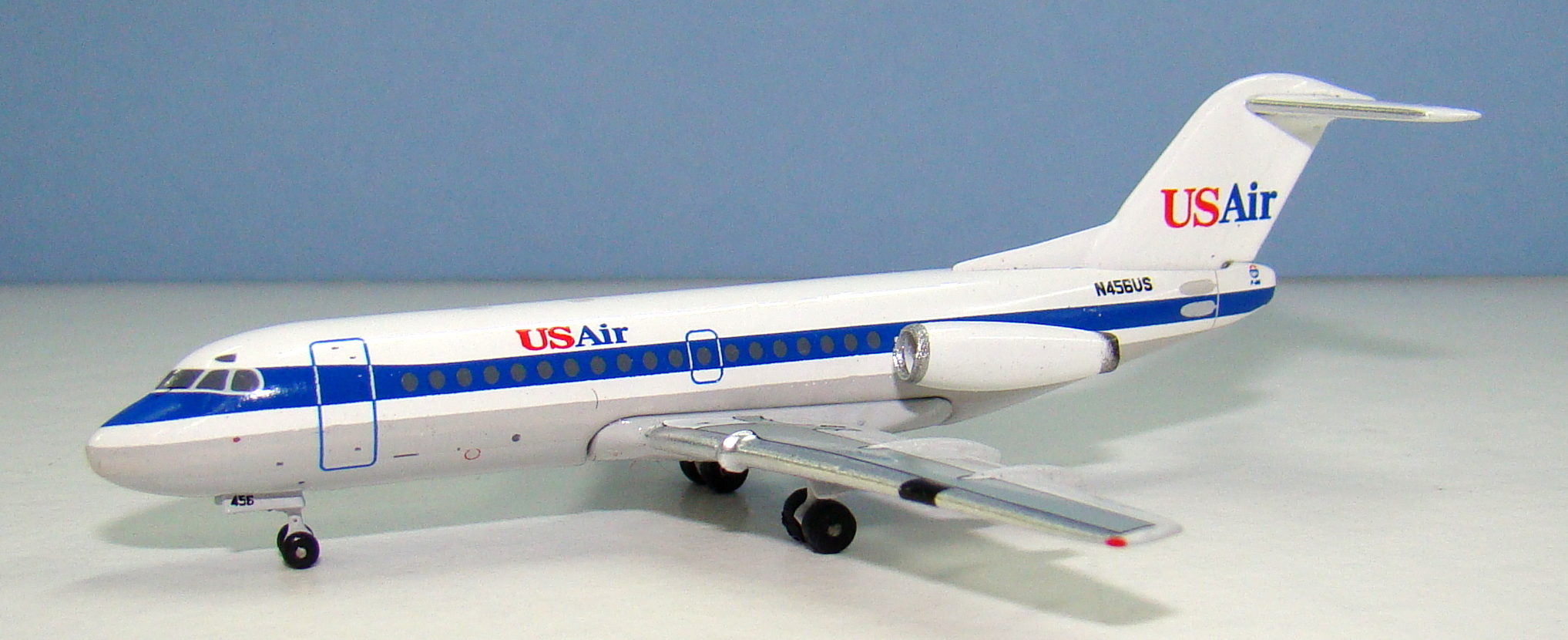
Quality wise this is a small model so any errors would be really noticeable. Conversely its small size also makes it much easier to package and so less likely to suffer from postage damage. I am very pleased to say that the models are perfectly put together.
N293N N456US
SCORE – 8 SCORE – 9
CONCLUSION
Both models end up getting the same score as each other, but for slightly different reasons. On the Piedmont release the cockpit window printing has an issue whilst on the USAir example the tail print is more annoying than the neck on the Piedmont bird. Yet both have the same issues around the nose and it is annoying that yet again a lack of attention to detail has let the side down. In general I rarely have any major issues with the moulds Aeroclassics use but they seem to struggle to recreate the liveries well. Considering how simple this scheme is that is less forgivable. Nevertheless these little Fokkers are approaching holy grail status for some and have sold out without much problem. I’m glad I own them despite their imperfections.
FINAL SCORE – 22/30

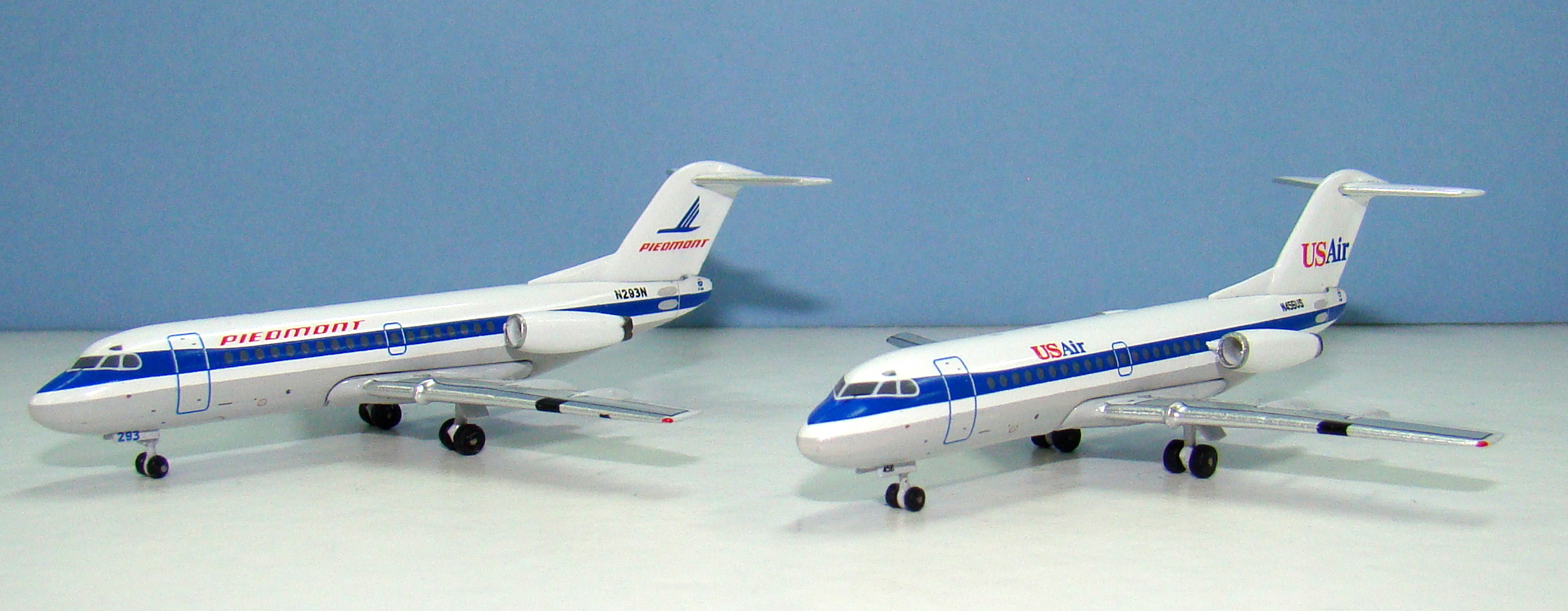

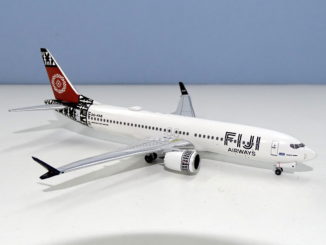
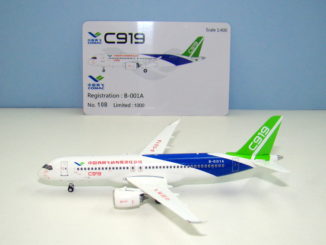
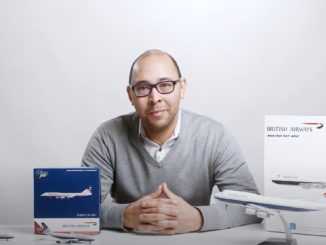
A great review. Looking forward to a follow-on review of the two in the Piedmont & US Air metal schemes in the May releases.
Yes outstanding analysis. Was lucky enough to fly on a Piedmont F28 in the thunderstorm filled skies of Florida back in the day.